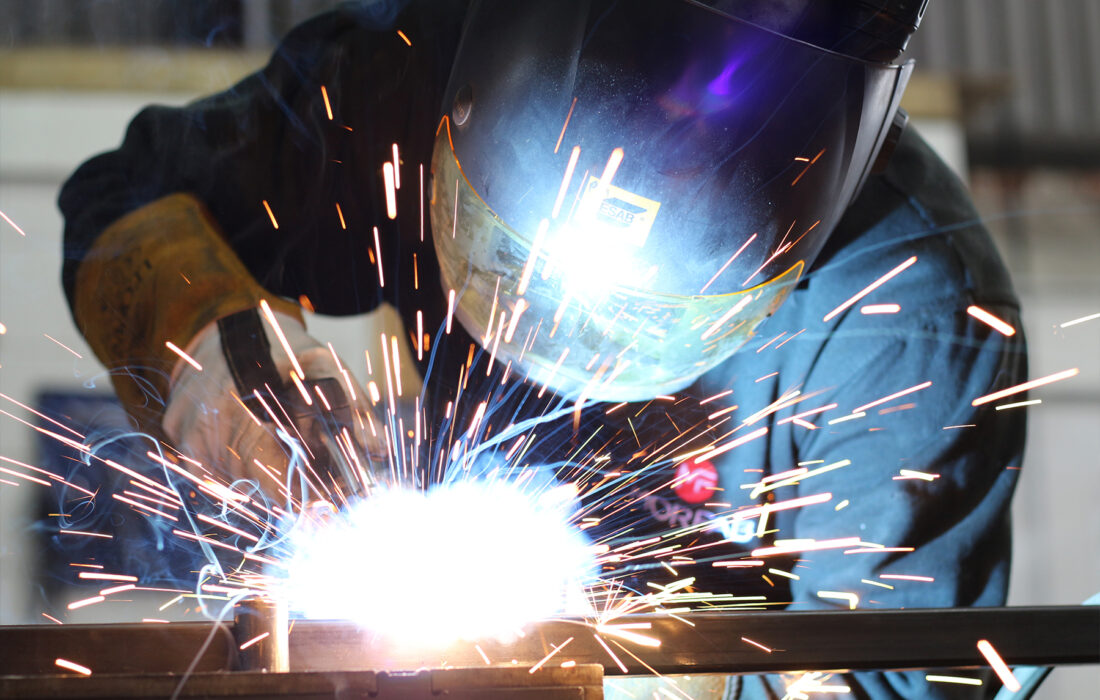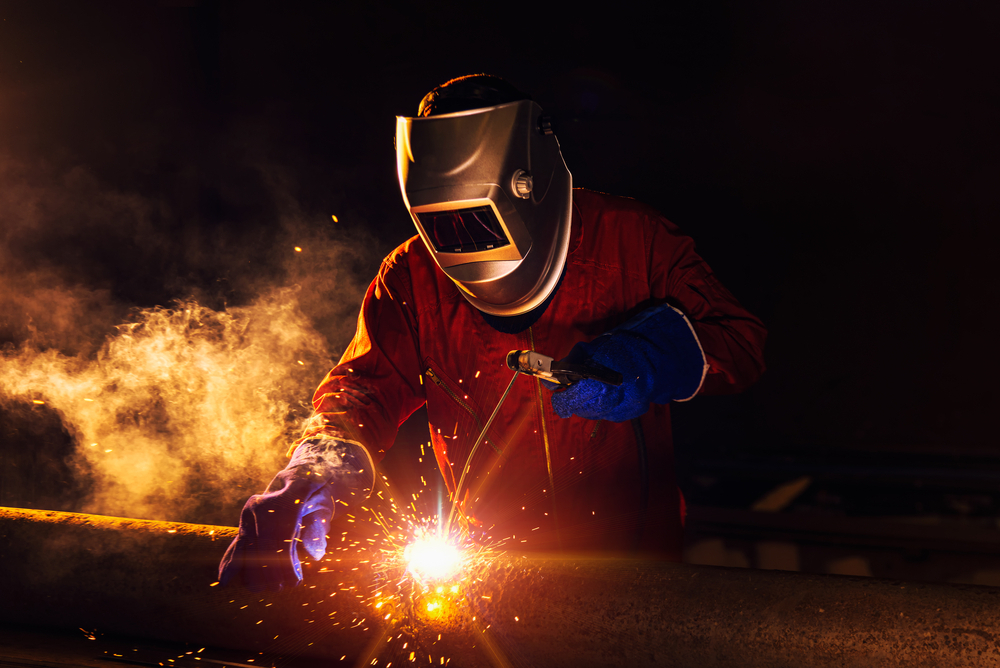Typical Welding Repair Service Issues and How to Address Them Properly
Welding fixings frequently come across a variety of issues that can endanger the integrity of the final product. Usual troubles include inadequate infiltration, porosity, and misalignment, among others. Each problem offers special obstacles that call for details approaches for resolution. Recognizing these issues is crucial for welders intending to enhance their outcomes and skills. This discussion will explore these common welding repair service concerns and efficient approaches to resolve them.
Inadequate Penetration
Inadequate infiltration takes place when the weld steel falls short to fully fuse with the base product, resulting in weak joints and potential structural failings. This concern frequently originates from insufficient warmth input, inaccurate electrode angle, or incorrect welding speed. Welders might experience poor infiltration due to a miscalculation of the required criteria for a particular material density or type. Furthermore, contamination on the base material's surface can impede efficient bonding, exacerbating the trouble. To deal with insufficient infiltration, welders need to guarantee suitable settings on their equipment and preserve a clean job surface area. Routine assessment of welds is recommended to recognize any deficiencies early, enabling for prompt adjustments and the avoidance of endangered structural honesty in welded settings up.
Porosity
Porosity is a common flaw in bonded joints that manifests as small gas bubbles caught within the weld metal. This defect can endanger the honesty of the weld, causing reduced stamina and possible failing under tension. Belgrade Welding. Porosity generally develops from contamination, moisture, or improper welding techniques, which enable gases to leave into the liquified weld pool. To deal with porosity, welders should guarantee proper surface area prep work, preserve a tidy functioning setting, and utilize appropriate welding parameters. Additionally, picking the right filler material and securing gas can reduce gas entrapment. Routine assessment and screening of welds can assist recognize porosity early, guaranteeing prompt corrective actions are taken, consequently maintaining the top quality and dependability of the bonded structure
Imbalance
Imbalance in welding can arise from numerous variables, consisting of improper arrangement and thermal expansion. Recognizing the source is essential for efficient resolution. A number of improvement techniques are available to realign parts and ensure architectural integrity.
Sources of Misalignment
Welding misalignment usually originates from a variety of underlying problems that can endanger structural honesty. One key cause is incorrect fit-up of parts before welding, which can lead to gaps and irregular surface areas. Variants in thermal development during the welding procedure can likewise cause distortion, specifically if the products being joined have various coefficients of development. In addition, poor clamping and fixturing may fall short to hold elements safely in position, causing motion throughout welding. Poorly maintained tools, including welding devices and tools, might present incongruities in the weld bead, further contributing to imbalance. Finally, driver error, coming from inadequate training or experience, can also play a substantial duty in developing misaligned welds.
Adjustment Techniques Offered
Addressing imbalance efficiently needs a combination of restorative techniques tailored to the certain problems handy. One typical technique is the use of jigs or components to hold elements in the proper setting during welding, making certain consistent alignment. Additionally, pre-heating the materials can help in reducing distortion and enhance fit-up. For substantial imbalance, mechanical realignment strategies, such as utilizing hydraulic jacks or clamps, can be used to fix the position prior to welding. Post-weld warmth treatment might likewise be needed to ease stresses brought on by misalignment. Mindful assessment and adjustment during the arrangement phase can avoid misalignment concerns from coming to be significant troubles, advertising a smoother welding procedure and improving total structural honesty.
Distortion
Distortion is a common obstacle in welding that can occur from various elements, including unequal cooling and heating. Recognizing the reasons for distortion is necessary for executing effective prevention strategies. Addressing this problem not only enhances architectural stability yet additionally improves the total top quality of the weld.
Causes of Distortion
When subjected to the extreme heat of welding, materials usually go through modifications that can lead to distortion. This phenomenon largely arises from thermal development and tightening throughout the welding procedure. As the weld area warms up, the product expands; upon cooling, it contracts, which can create internal stress and anxieties. Furthermore, irregular home heating across a work surface can aggravate these tensions, resulting in try this web-site warping or bending. The sort of product likewise plays a significant role; metals with varying thermal conductivity and coefficients of expansion might react differently, bring about uncertain distortions. Poor joint style and inadequate fixturing can add to imbalance during welding, raising the likelihood of distortion. Recognizing these reasons is essential for reliable welding repair service and avoidance approaches.
Avoidance Techniques
Effective prevention techniques for distortion during welding emphasis on controlling heat input and guaranteeing proper joint design. Preserving a consistent warmth input helps to minimize thermal expansion and tightening, which can bring about distortion. Using techniques such as preheating the work surface can also decrease the temperature level gradient, promoting consistent heating. Furthermore, choosing proper joint layouts, such as T-joints or lap joints, can boost security and decrease tension concentrations. Implementing correct fixturing to protect the work surfaces in place additionally aids in keeping placement during the welding process. Staggered welding series can disperse heat much more uniformly, preventing localized distortion. By using these methods, welders can substantially reduce the probability of distortion and boost the total top quality of their welds.
Cracking
Fracturing is a common problem encountered in welding repair work, usually arising from numerous elements such as improper air conditioning prices, product option, or insufficient joint prep work. The event of splits can significantly jeopardize the integrity of the weld, causing possible failures during procedure. To address this issue, welders must first evaluate the origin creates, making sure that site web products work and appropriately picked for the certain application. Additionally, regulating the air conditioning price throughout the welding process is important; rapid cooling can cause stress and anxiety and cause splitting. Appropriate joint design and prep work also add to minimizing the threat. Carrying out these approaches can boost weld high quality and longevity, ultimately minimizing the likelihood of cracking in completed weldments.

Insufficient Blend
A significant problem in welding repairs is incomplete fusion, which happens when the weld steel does not adequately bond with the base product or previous weld passes - Belgrade Welding. This issue can bring about weak points in the joint, possibly endangering the stability of the welded structure. Elements contributing to insufficient blend consist of insufficient warmth input, improper welding strategy, and contamination of the surface areas being signed up with. To address this concern effectively, welders should assure appropriate pre-weld cleaning and surface area prep work, along with readjust their welding parameters to attain sufficient penetration and fusion. Regular evaluation throughout the welding process can additionally assist recognize incomplete combination early, enabling prompt rehabilitative steps to improve the total high quality of the weld
Overheating
While welding repairs can enhance architectural integrity, overheating provides a significant challenge that can lead to product deterioration. Too much warmth during welding can modify the mechanical residential properties of steels, resulting in decreased stamina, enhanced brittleness, and warping. This sensation is particularly crucial in high-stress applications where architectural dependability is vital. Determining getting too hot can include visual assessments for staining or distortion, as well as keeping track of temperature level throughout the welding procedure. To reduce the threats connected with getting too hot, welders must utilize ideal strategies, such as regulating warm input, changing traveling rate, and using appropriate filler products. Additionally, executing pre- and post-weld warm therapies can assist bring back product properties and improve the general high quality of the repair, making sure lasting performance and security.
Frequently Asked Concerns
What Are the Common Indicators of a Welding Issue?

How Can I Check My Welds for Top quality?
To test welds for high quality, one can utilize visual inspections, ultrasonic screening, and click here to read radiographic approaches. Each method ensures architectural honesty, determines defects, and confirms adherence to specified standards, eventually improving the integrity of the bonded joints.
What Safety Safety Measures Should I Take While Welding?
When welding, one need to focus on safety and security by using proper individual safety tools, guaranteeing appropriate ventilation, securing flammable materials away, keeping a tidy office, and understanding surroundings to avoid injuries and accidents.
Can I Repair a Weld Without Remodeling the Entire Joint?
Repairing a weld without redoing the whole joint is possible, relying on the damages (Welding). Methods such as grinding, including filler product, or using a welding procedure can successfully address particular problems while maintaining the surrounding framework
What Equipment Are Vital for Effective Welding Repairs?
Necessary devices for efficient welding repair work consist of a welding maker, wire brush, grinder, safety equipment, clamps, and filler products. Each tool plays an essential function in making sure quality and safety throughout the repair work procedure. Porosity generally arises from contamination, dampness, or improper welding strategies, which allow gases to leave right into the liquified weld pool. Poorly kept tools, consisting of welding devices and tools, may introduce disparities in the weld bead, further contributing to imbalance. When subjected to the extreme warm of welding, materials often go through adjustments that can lead to distortion. Breaking is a common issue run into in welding repair work, frequently resulting from various aspects such as inappropriate cooling rates, product choice, or inadequate joint preparation. A substantial concern in welding repair services is insufficient blend, which occurs when the weld steel does not effectively bond with the base product or previous weld passes.